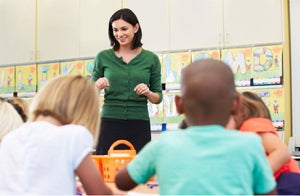Kindermark Kids Blog — classroom

3 Classroom Tips For Starting School Year Well
Teachers, want to set up your classroom efficiently and start off your school year well for students? Here are my top 3 tips for classroom success that every teacher should know. From furniture set up to communicating expectations- here's what I've learned works best as you begin a new year.
- Kindermark Kids
- Tags: classroom new school year Teacher Tips teachers Tips for Teachers

